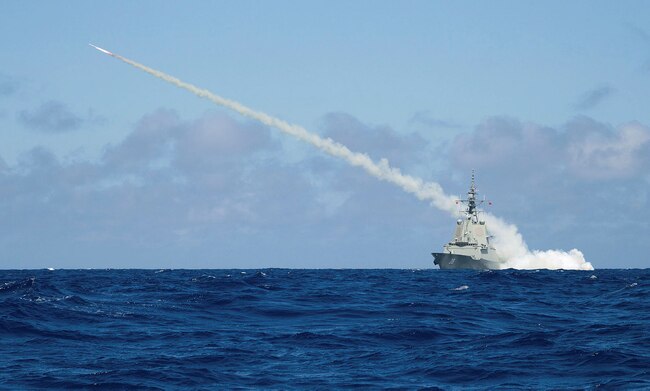Challenges call for steadfast resolve
The challenges that confront Australia today economically and geopolitically are unlike anything we have ever faced before.

The Force Structure Plan (the Plan) and Defence Strategic Update (the Update) announced by the government in July detailed $270bn of investment across the next 10 years to “upgrade the capability and potency of the Australian Defence Force”.
This provided a timely examination of our evolving geopolitical landscape and sharper focus around the government’s strategic direction for defence.
From under sea to space, the realisation of the advanced military capabilities they prescribe will ensure Australia remains on track to become the world’s first integrated 5th-Generation fighting force.
These capabilities are not just a technological step change but represent a level of investment in Australia’s defence industry and research communities that is unparalleled in recent memory.
While the Update describes the need for the Australian Defence Force to “adjust, adapt and respond on a continual basis” to meet the evolving threats it faces, the defence industry and research communities must also play an integral role in responding to that strategic environment.
To that end, it was the words of the Prime Minister and the Minister for Defence in the foreword of the Update, requiring not only advanced military capabilities but also a “demonstrated resolve”, that sounded a clarion call to the defence sector for action.
Australia’s resolve has been tested many times and each time we have risen to meet those tests. But the challenges that confront Australia today economically and geopolitically are unlike anything we have ever faced before.
In response to shifting sands in the Indo-Pacific, a global pandemic and the economic uncertainty it has created, the acquisition of advanced military capabilities is but part of the solution.
An internationally competitive sovereign defence industry capability was at the heart of the White Paper, with the Plan and the Update both reinforcing its importance while contributing a greater emphasis on security and resilience.
Put simply, if we are to demonstrate resolve and overcome these challenges, as a defence community we must prove our ability to develop, integrate, sustain and innovate Australia’s advanced military capabilities in the current environment at will.
Thanks largely to the foresight of the White Paper, Australia is not starting from scratch in this regard.
Australia’s sovereign defence capability has developed steadily and purposefully through mutually beneficial partnerships underpinned by a commitment to technology transfer, knowledge building and innovation.
While COVID has been devastating to our communities and created unprecedented challenges to our highly globalised industry sectors, it has also given us glimpses of an underlying resilience and self-sufficiency.
During May and June of this year, Lockheed Martin Australia, working with the Royal Australian Navy and local industry partners as part of an enterprise approach, performed specialist upgrades and deep maintenance on the Aegis Weapons System including SPY-1D (V) radar systems on board the Hobart class destroyers. This is the first time a sovereign Lockheed Martin team based outside of the US has planned
and executed an upgrade to an Aegis-equipped ship, demonstrating the value of
an enterprise approach. This achievement demonstrates a symbiosis of global expertise and investment in local capabilities enabling sovereign talent to deliver a complex sustainment package a hemisphere away.
The Update’s emphasis on self-reliance is not restricted to the capabilities Australia deploys today, or even in the near future. While some advanced technologies such as sophisticated sensors, autonomous systems and long-range strike capability are within our grasp, the Update also articulates the need to focus on the emerging and disruptive “next generation” technologies such as hypersonics that will become a critical element of Australia’s capability mix well into the future.
Australia’s research community is world renowned and has made substantial contributions to advancing the technological edge in the information age.
Just like our industrial partnerships that underpin the evolution of Australia’s industry capability, Australian researchers are working every day with Lockheed Martin’s advanced technology laboratories in Australia and the US to solve the technological challenges that will be critical to Australia’s future national security interests.
The world-class nature of this research develops resilience by fostering the next generation of sovereign defence industrial capabilities while enabling Australia to solve the problems of tomorrow, have global impact and create export opportunities.
As we look to the future, our research focus is on creating an integrated, interoperable defence force that ensures Australia can meet its 5th-Generation combat capability needs.
At the heart of that future capability is a next-generation integrated air and missile defence solution that will connect our air, land, sea, space and cyber systems and establish the ADF as one of the most advanced defence forces in the world.
It is incumbent on all of us as a sovereign defence industry to demonstrate Australia’s resolve in every research dollar we invest, in the precision applied to every component we assemble and in the performance of every platform we integrate and sustain.
Joe North is chief executive, Lockheed Martin Australia New Zealand.
